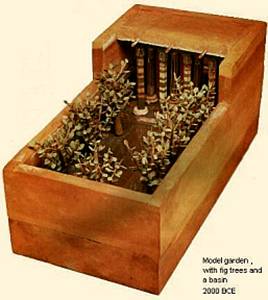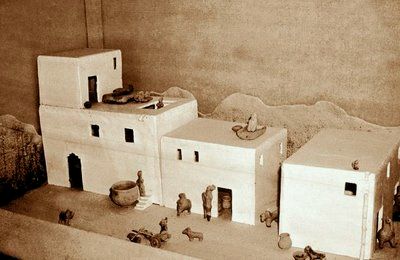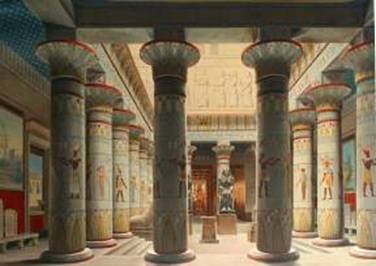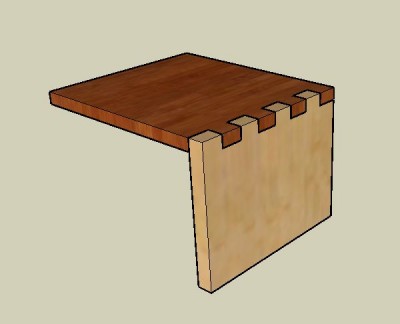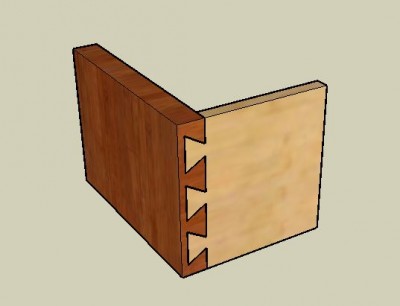DOMESTIC ARCHITECTURE
WORKERS HOMESLike their ancestors, Egyptians continued to use mud brick and stone to build their homes. Common homes were made of sun dried bricks but those of the wealthy were fired. The "worker's home" was usually one story high with up to four rooms. A flat roof provided more space for cooking and sleeping. There was usually a courtyard and some storage cellars. Furniture pieces were few and often built-in, but might include beds and storage chests.
Egyptian towns were laid out on a grid with common homes in crowded areas on narrow streets. Palaces and houses of noblemen were sited on wide avenues. Whether houses were large or small, they all focused inward – toward a courtyard when possible.
|
|
Town HomesTown houses were larger, included an enclosed garden, and had up to three different levels. Their mud brick walls were plastered and whitewashed. Because the walls were much higher, the first floor was sometimes made of stone to support the weight and ceilings were held up with columns. The lowest level was for food preparation, storage and utility. Some houses had built-in clay benches and tables. The public area was on the first floor and usually located on the north side where it was cooler. The second and third levels had living spaces including bedroom, bathrooms, and women's quarters. Bedrooms sometimes had sleeping platforms or niches for a wooden bed. Like the common folk, the roof was used for preparing and cooking meals, which were delivered by servants.
|
|
WEALTHY HOMESWealthy homes had also gardens with pools and small shrines for worship. Some houses were decorated with tiled floors, barred windows, and painted walls. Rulers, priests, and the elite often had dwellings or palaces that were part of a royal precinct adjacent to a temple. Plaster covered walls were decorated with scenes and symbols painted in brilliant colors. (see text pp. 17 - 18)
Click on this link for the presentation on Egyptian Homes |
|
FURNISHINGSLife in the desert meant there was very little wood and the available stock was small in size. For this reason, furniture was often made of a variety of unmatched woods. To accommodate this problem paint, inlay, and veneer were used to finish the surface and give them a consistent appearance. For the king, solid sheets of gold were sometimes applied. Typically, Egyptian furnishings were embellished with plant motifs, animal forms, and religious symbols. In fact, the Egyptians were highly skilled craftsmen who perfected the arts of veneer and inlay along with sophisticated joinery techniques to fasten pieces together. Here are some examples of "joinery" techniques for furniture: |
|
|
|
|
|
Box Joint |
Dovetail Joint |
